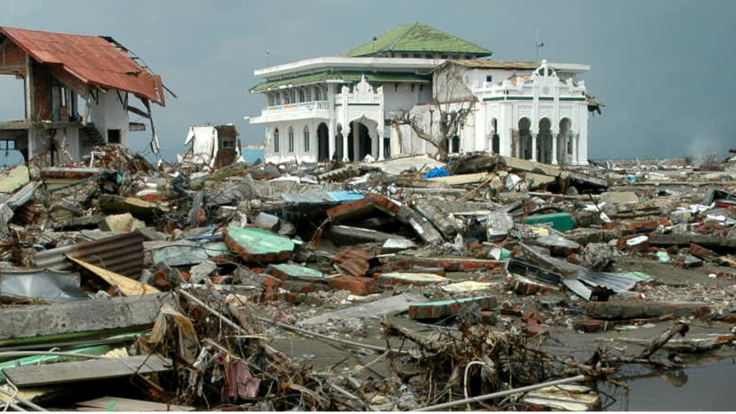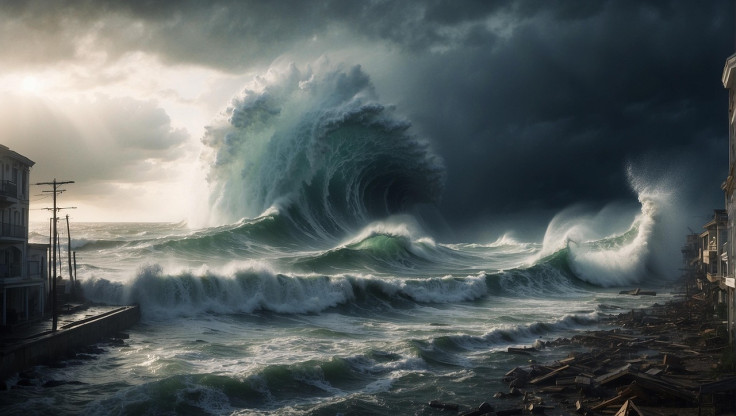Could a Mega Tsunami Hit the US? Experts Reveal 15% Risk of Devastating Disaster within 50 Years
Scientists warn that the Cascadia Subduction Zone could unleash a 1,000-foot mega-tsunami within 50 years

A silent menace looms off America's Pacific coast, with a 15 per cent chance of a catastrophic mega-tsunami striking within five decades.
A new study by Virginia Tech geoscientists, led by Tina Dura, warns that a mega-tsunami, potentially up to 1,000 feet tall, could be unleashed if a magnitude 8.0 or greater earthquake ruptures the Cascadia Subduction Zone within the next 50 years.
The Cascadia fault stretches some 600 miles from Northern California to Vancouver Island and poses one of North America's most lethal seismic threats. Coastal cities, including Seattle and Portland, could face instant devastation, reshaping the landscape and shattering recovery timelines.
The 15% Threat
Virginia Tech's analysis, in the Proceedings of the National Academy of Sciences, estimates a 15% probability of a magnitude 8.0 or higher earthquake striking the Cascadia Subduction Zone in the next half-century. Such a quake could collapse coastal land by up to 6.5 feet and spawn waves nearing 1,000 feet, overwhelming hazard maps and evacuation plans.
Simulations reveal that land subsidence would allow tsunami waters to surge much further inland than previously reckoned, placing entire urban regions in peril.
Regions on the Frontline
Southern Washington, northern Oregon and northern California emerge as the most vulnerable areas, where the dual dangers of subsidence and mega-tsunami could spell catastrophic flooding.
Meanwhile, Alaska and Hawaii, though geographically separate, remain at risk due to seismic activity, volcanic flank collapses and landslides. These could trigger their own mega-tsunamis or compound wave impacts on US shores.

A Fault Waiting to Unleash
The Cascadia Subduction Zone has not experienced a major quake since 1700, yet geological records show that such events tend to recur every few hundred years, on average every 243 to 500 years.
This long interval hints at an ominous imbalance: stress has built over centuries, making the region increasingly overdue for a catastrophic tremor.
Shock to the System
'The expansion of the coastal floodplain following a Cascadia subduction zone earthquake has not been previously quantified', warns Tina Dura, describing how widespread damage could outstrip current preparedness.
If the quake-and-wave event strikes by 2100, which some models place at a 29 per cent likelihood when factoring in sea-level rise, the consequences may be so severe that certain low-lying coastal areas may become effectively uninhabitable.
From Risk to Readiness
Human drama collides with geological inevitability as communities in the Pacific Northwest confront their vulnerability. Rapid subsidence, mega-waves and crowded metropoles form a perfect storm of catastrophe.
Urgent investment is needed in early-warning systems, evacuation infrastructure and public education. Scientists stress that, while mega-tsunamis cannot be prevented, their human toll can be mitigated through preparation.
Impending Mega-Tsunami
The United States' western coastline stands on a precipice, both geological and existential. A 15% chance of a magnitude 8 or greater earthquake along the Cascadia Subduction Zone within 50 years carries the real spectre of a mega-tsunami up to 1,000 feet tall. Coastal land could subside dramatically, cities like Seattle and Portland could be engulfed within minutes, and traditional hazard maps would be rendered obsolete.
This is not distant science fiction but a measurable threat, backed by painstaking simulation and geological record. The last great quake occurred over three centuries ago; history and models tell us another could arrive in our lifetimes.
The danger is undeniable: collapse, surge, devastation and the desperate race to be ready before nature strikes.
© Copyright IBTimes 2025. All rights reserved.





















